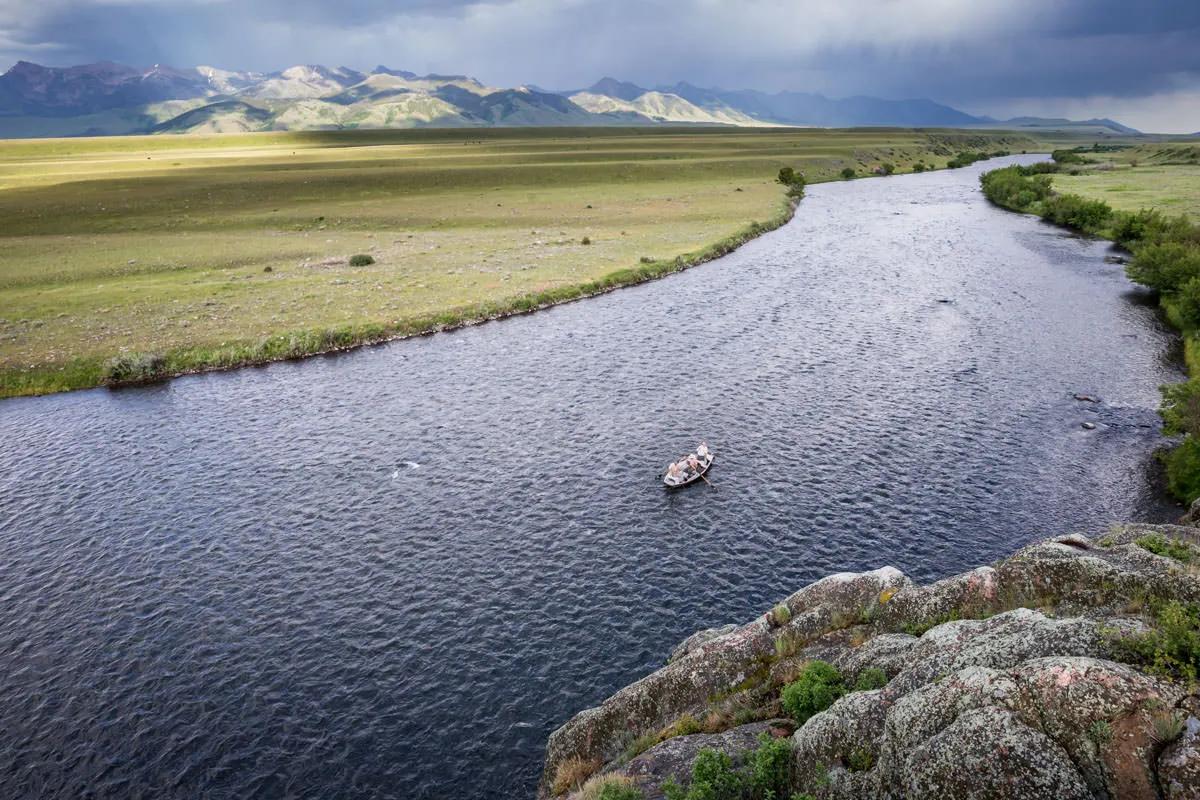
The world famous Madison River flows for 183 miles north from its headwaters in Yellowstone National Park to its confluence with the Jefferson and Gallatin Rivers near Bozeman, Montana. These rivers merge to form the Missouri River. The Madison River and its nearby waters offer some of the best and most diverse fishing in Montana. Planning a fishing trip around staying in the Madison Valley will give you multiple fishing options to choose from - here are some of the best ones to consider:
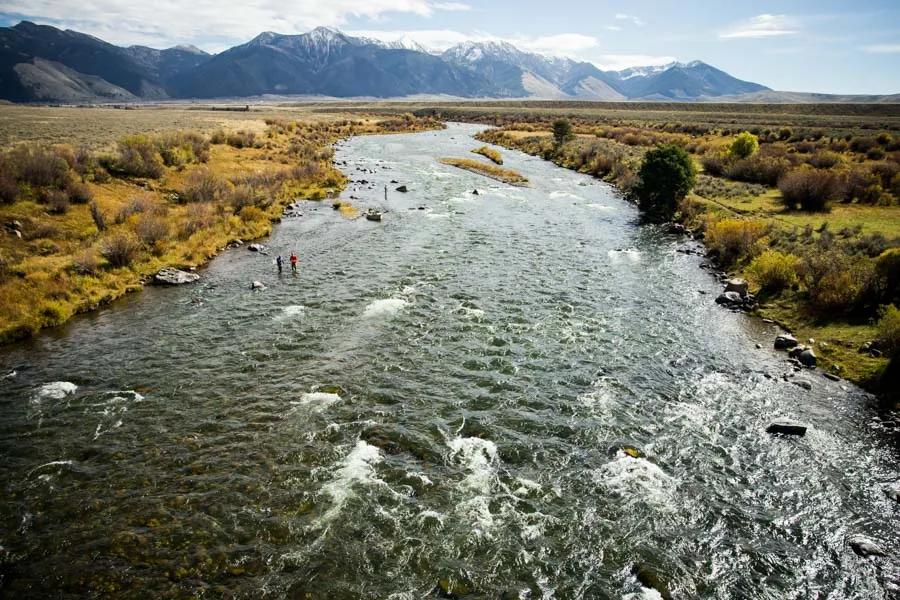
Upper Madison River
Known as the 60 Mile Riffle, the Upper Madison River in between Hebgen Dam and Ennis Reservoir flows swiftly out of the mountains and through the wide open Madison River Valley. The river here is characterized by its quick pace, generally shallow depth, rocky bottom, and plentiful trout that can reach trophy sizes. With cold water consistently pumped from the depths of Hebgen Reservoir by Hebgen's bottom-release dam, the main section of the Upper Madison River between there and Ennis Reservoir is one of the most dependably cold rivers in the state, even during hot summers that force fishing restrictions on other rivers. The dams also moderate water flows during snowmelt runoff, making the Madison River a dependable fishing option basically all season.
The Upper Madison sees prolific insect hatches, including the well-known salmonfly hatch at the end of June. Spring and fall fishing on the Upper Madison can also be phenomenal, with large, spawning fish moving out of Ennis, Quake, and Hebgen lakes into the river system. The Madison River above Hebgen Reservoir and inside Yellowstone Park is mostly a spring and fall fishery, with warm water temperatures preventing high resident fish populations.
From the bottom of Quake Lake’s outlet to the Lyons Bridge Access site the river is regulated to wade fishing only. Boats can be used to move around the river, but anglers must be standing on the ground to legally fish. From Lyon’s Bridge to the Ennis Bridge, fishing from boats is allowed. From Lyon’s to the Varney Access site the river flows fairly uniformly and swiftly through one main channel, making it difficult to fish on foot. Below Varney, the river gets more character, features side channels and braids, and has more prominent runs, buckets, and other holding water, making it better suited for wade fishing than the float section above. From Ennis Bridge to Ennis Reservoir, fishing is again regulated to wading only, with boats only allowed to be used to ferry around the river. Especially in the spring and fall, fishing in this area can be very productive as spawning trout move up from Ennis Reservoir into the river system.
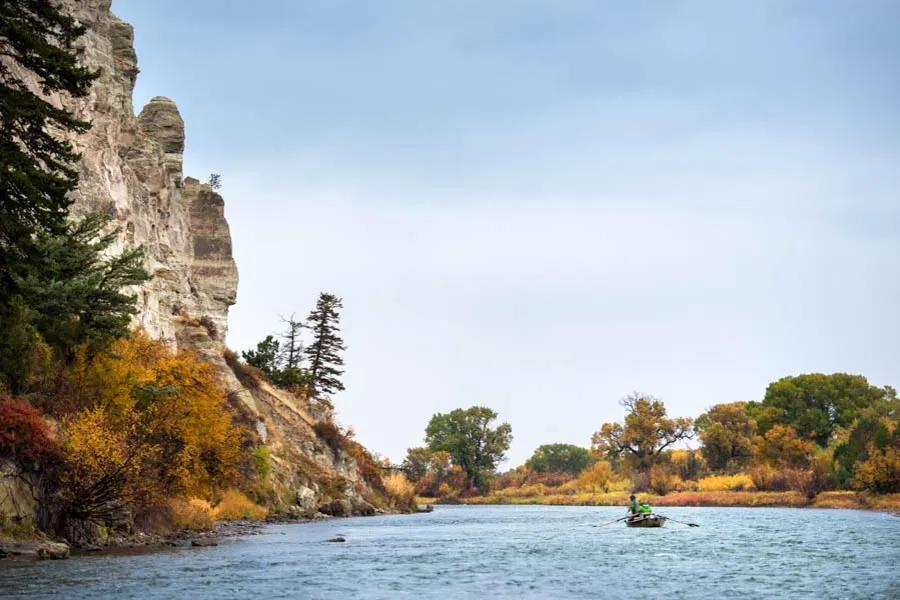
Lower Madison River
Fishing the Madison River downstream of Ennis Dam is much different than the river above. The section from the outflow of Ennis Dam to Headwaters State Park where it meets the Jefferson and Gallatin to create the Missouri, is known as the “Lower Madison.” Ennis Dam is a top-release dam, and Ennis Reservoir is quite shallow, with an average depth of only about 8’ and a maximum of only 20’ or 30’. Consequently, water released from Ennis Dam is much warmer than the water from Hebgen Dam upstream and the Lower Madison flows significantly warmer than the Upper, making it a seasonal fishery.
From roughly mid July to mid September, the Lower Madison gets above 70 degrees consistently and gets put under Hoot Owl fishing restrictions. By this time of the year the river is usually taken over by inner tubers enjoying a fun float in the comfortable water.
The Lower Madison River sees some of the heaviest insect hatches early in the season. The Mother’s Day Caddis Hatch early in May is the first premier hatch of the year in our area, but BWO’s are around earlier, and a smorgasbord of other mayflies and Yellow Sally stoneflies continue keeping fish rising well into late June at least. Beartrap Canyon also sees a modest salmonfly hatch, though the big bugs aren’t prevalent below the canyon. The character of the water in Beartrap Canyon is more similar to the Upper river above Ennis Reservoir than the Lower Madison below the canyon, making it sort of a “Middle” Madison.
After it exits Beartrap Canyon near the Warm Springs Access site, the Madison slows significantly as the landscape flattens. The roughly 12 mile section of river between Warm Springs and the Grey Cliff Access site is the most fished section of the Lower Madison. This part of the river is productive for both floating and wading anglers, with excellent spots to head hunt rising fish during the early season hatches. The water here is fairly uniform and somewhat spring creek like, and finding fish that aren’t actively rising can be difficult however, resulting in many frustrating days on the Lower.
Between the Grey Cliff Access site and the Missouri Headwaters State Park, access to the Lower Madison is minimal and trout numbers dwindle, but some good size fish can be found down there for anglers willing to put in the time. This area sees decent insect hatches too, but the lower fish population makes finding actively rising fish much less common than further up river. Exploring some of the braided channels downstream of Grey Cliff on foot can be very rewarding at the right times of the year though, and solitude is much easier to find.
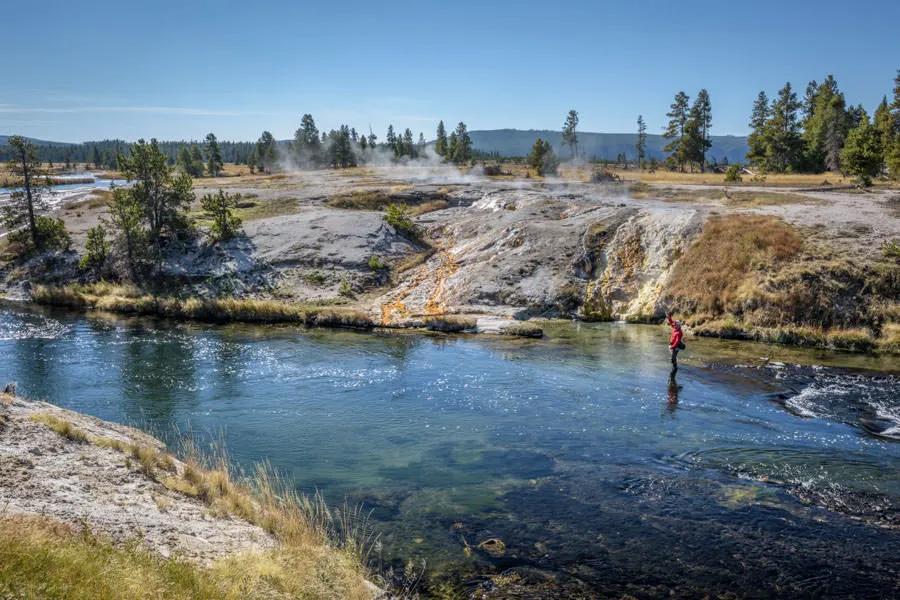
Yellowstone National Park
Venturing into Yellowstone National Park is another great fishing option if staying in the Madison River Valley. However, waters around the West Entrance of the park are somewhat seasonal and fishing is often best in late spring/early summer and again in the fall. Many alpine lakes in the park also provide good fishing during summertime. Yellowstone Park has different seasons and regulations than Montana, Idaho, and Wyoming so be sure to review them before fishing in Yellowstone National Park.
Above Hebgen Reservoir the Madison River in Yellowstone National Park is much more of a seasonal fishery than below, running too warm for high resident fish populations in summer due to thermal influence on the Firehole and Gibbon rivers, which merge inside Yellowstone National Park to form the Madison. During the spring and fall though, fishing the Madison just above Hebgen Reservoir and inside Yellowstone Park can be a great option as browns and rainbows move up from the lake and into the river to spawn.
From opening day of the Yellowstone Park fishing season in late May through late June or so, and then again in September and October the Firehole and the Gibbon Rivers are also great fishing options. These rivers run warm due to the thermal influences like Old Faithful that feed them, and therefore see much earlier hatches than other waters in the area, but then get too hot to fish in early July to mid September. They stay warm into fall though, producing good baetis hatches late in the season.
The Firehole River has some early and late season hatches that bring loads of fish to the surface, the White Miller Caddis being one of the better known ones. It is also famous for its soft hackle swing fishing and its salmonfly hatch in early June, which is significantly earlier than most other rivers in the area. Simply fishing in such a unique landscape with the geysers and frequent bison nearby makes for a memorable day.
The Gibbon River flows over multiple waterfalls during its course, which separates different species of fish. The meadow stretches of the river are challenging, spring creek like fisheries that are difficult to locate fish in unless they are actively rising, though the river does see some good mayfly hatches here. The pocket water of the Gibbon canyon section below the meadows is more forgiving and often fishes well with attractor dry flies. Below Gibbon Falls, smaller size resident fish can make for fun fishing early in the season. In the fall, larger, migrant brown and rainbow trout can be found in the lower Gibbon, though they are not nearly as plentiful as in the Madison.
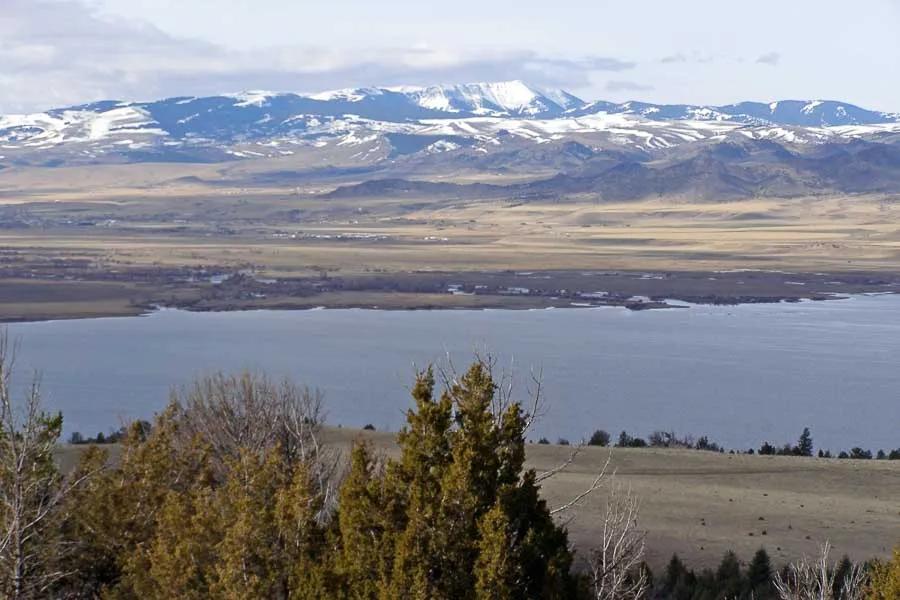
Lakes - Hebgen, Ennis, and Alpine
Many of the lakes found around Ennis and the Madison River Valley provide quality fishing opportunities. From alpine lakes in Yellowstone Park and the National Forests surrounding the valley to private ranch lakes to public reservoirs, stillwater fishing in the area is often overshadowed by the better known Madison River.
During the warmest summer months, when little aquatic insect life is present in our local rivers, Hebgen Lake sees nearly daily hatches of tricos and callibaetis mayflies that can bring some of its large resident fish to the surface to surf and loudly inhale these vulnerable insects. Going after these “gulpers” can make for an exciting day of sight fishing. Ennis Lake and others in the area also get these hatches, though timing differs some depending on water temperatures. Cliff and Wade lakes are also easily accessible and are home to some very large trout, which can sometimes be seen cruising through the crystal clear water.
For those looking to catch native grayling or just get off the beaten path, any of the three Grayling Lakes - Gebe, Wolf, and Cascade - inside Yellowstone National Park are a good option. The hike to these lakes is a moderate 2.5 to 3.5 miles or so, depending on which lake. Cascade Lake is on the east side of the Continental divide, and its outlet creek eventually flows east into the Yellowstone River. Just a couple miles west, but on the other side of the continental divide, Grebe and Wolf Lakes feed the Gibbon River which flows west and eventually joins with the Firehole River to form the Madison.
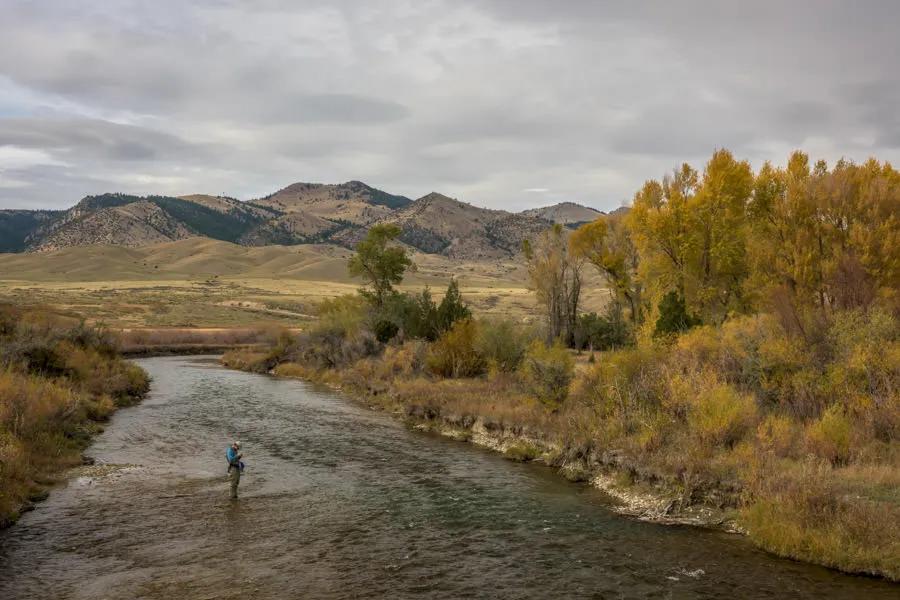
Ruby River
Not technically in the Madison River Valley but just a short drive away through historic Virginia City, the Ruby River is a unique, smaller river well suited for wade fishing. Above Ruby Reservoir in national forest lands, the Ruby River is a small, undammed stream home to mostly small rainbow and cutthroat trout. Getting all the way back past the reservoir into the national forest where the Ruby flows requires a much longer drive than fishing its lower reach though. It is important to note that the Ruby here does not open for fishing until the third Saturday in May.
Below Ruby Dam, the river is home to a good population of rainbows and brown trout, which can reach surprisingly large sizes. This tailwater section of the river produces some good insect hatches early in the spring, but then sees a typical runoff season from mid/late May into late June or so that makes it difficult to impossible to fish. Along with fishing standard nymphs and dry flies that match hatches of midges, Blue Winged Olives, PMD’s, and caddis, throwing streamers in the Ruby River is always worth a try and can be surprisingly effective. New regulations restricting fall fishing have been put in effect recently and are subject to change so be sure to consult the most current fishing regulations before heading here.
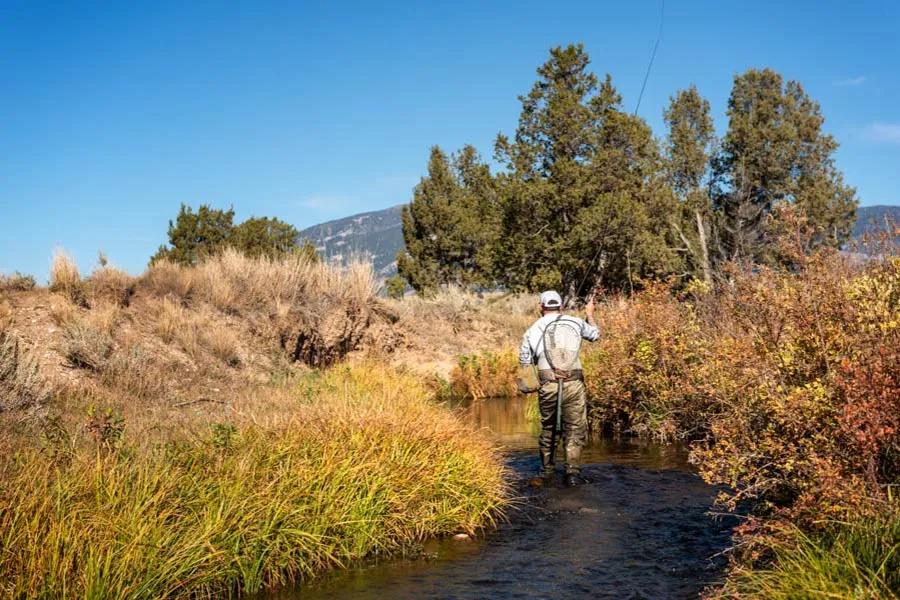
Blue Lines
For adventurous anglers who enjoy pouring over maps and planning, searching out likely “blue lines” and exploring the nooks and crannies, can possibly yield memorable fishing with little pressure. Countless small tributaries that feed the better-known Madison River are worth exploring but are often overlooked. You may have to go pretty far up river to get above irrigation draws, depending on the time of year though. Some medium size options like the West Fork of the Madison are better known and fished somewhat regularly, but many other, smaller options can be explored with some extra effort. Occasionally these exploratory days can end in a bust and you should be sure to bring bear spray, but any day spent fishing and exploring the waters in the Madison Valley is a day well spent and it’s likely you’ll find a new place to fish.
The Madison River is frequently rated as the number one wild trout fishery in North America. This amazing river is one of the most consistent in Montana for producing trophy trout and high fish counts. The dam the forms Hebgen Lake helps to moderate the flows on the Madison River resulting in very consistent fishing throughout the year. Scenery along the Madison is legendary and ranges from broad valleys lined with rugged mountain peaks to 3000 foot cliff walls in the Bear Trap Canyon Wilderness Area. Any angler who wants a variety of fishing yet consistency can find it in Montana's Madison River Valley.
